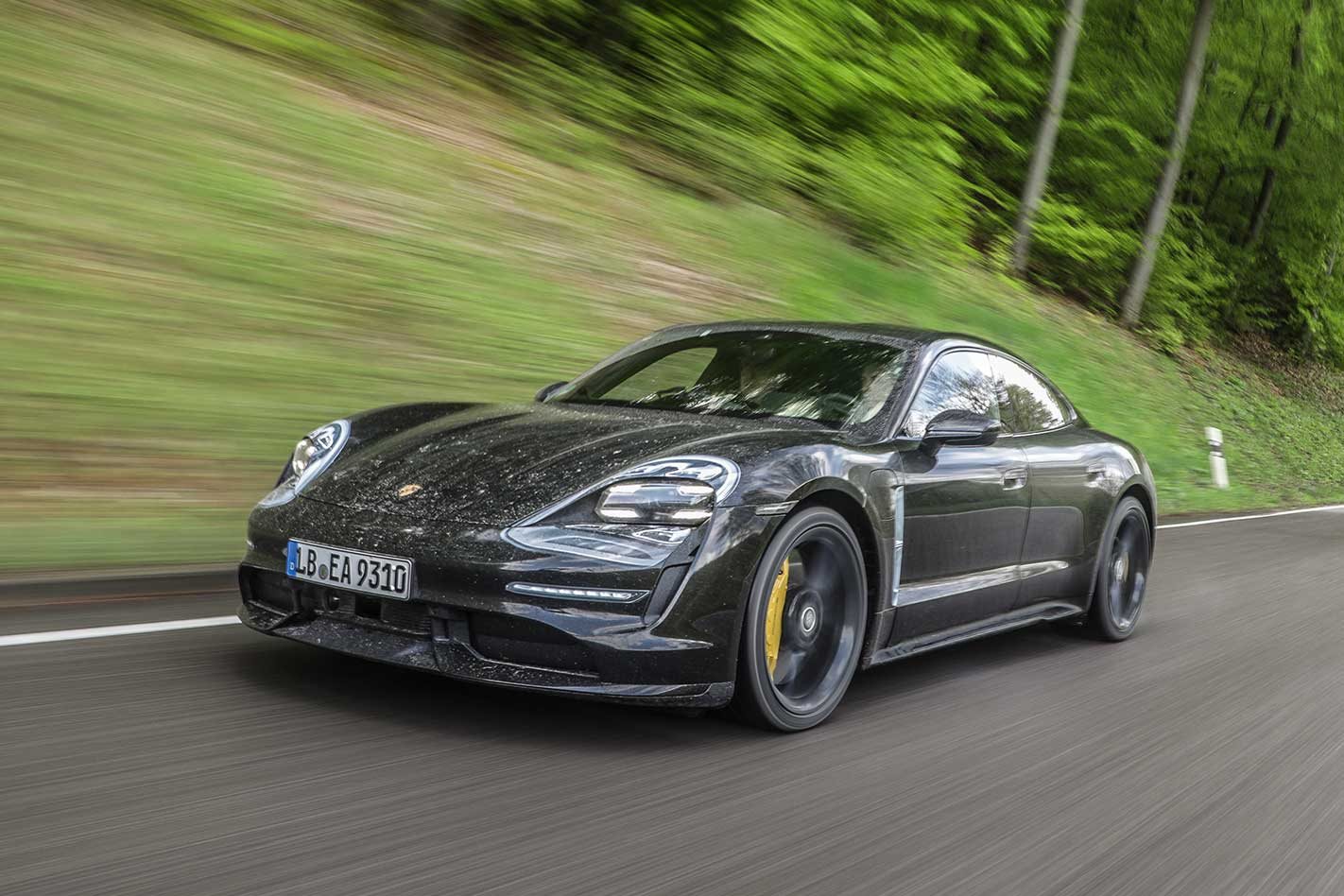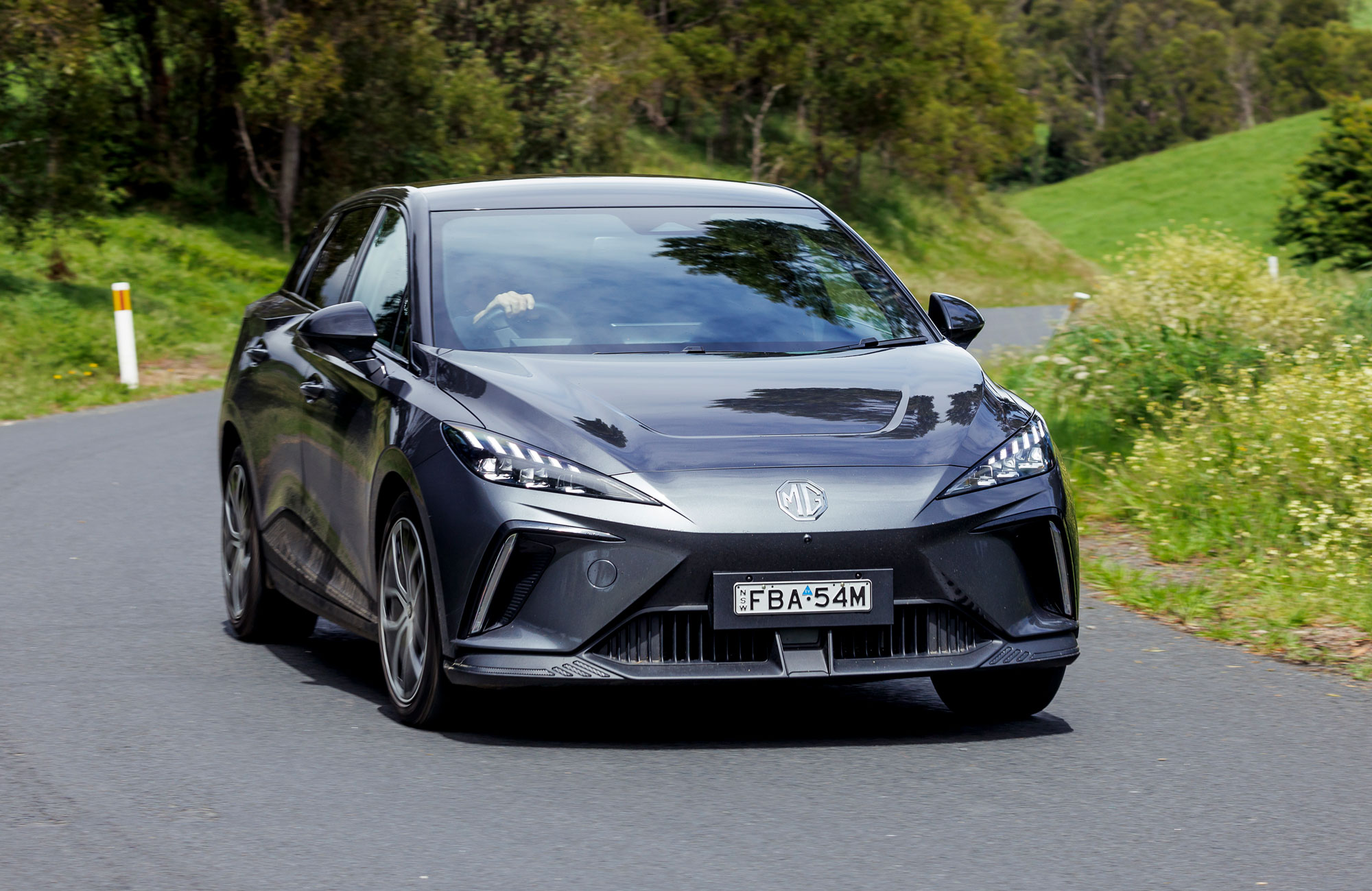Riding in a pre-production Porsche Taycan Turbo with chief project engineer Stefan Weckbach driving is like watching a Marvel film in an F1 simulator wearing a virtual reality headset. I have driven a lot of fast cars, but the steroidal driveline in the hush-hush Porsche elevates speed to another level as adrenaline floods your body.
The first G-force attack comes two corners from Porsche’s Weissach ‘think tank’ and hits my brain like a bomb; that’s what two potent e-motors and 650kg of fully charged lithium-ion batteries can do to you.
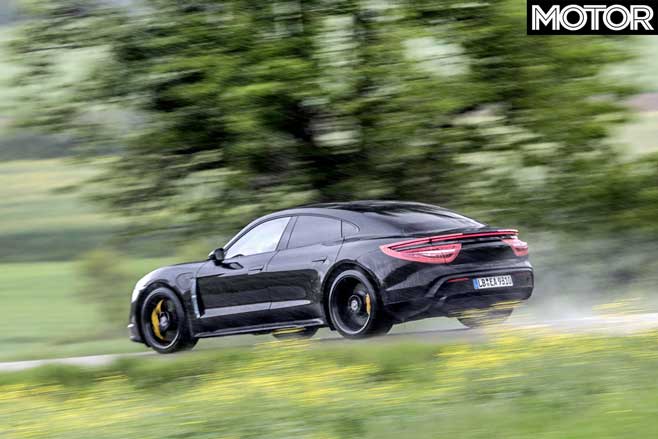
Forget stability management by brake actuation, the Taycan’s black box controls your heartbeat by a wheel-selective torque feed for “zero loss, 100 per cent dynamic efficiency”.
Like all EVs, the Taycan is not just about high velocities but it can cruise at 260km/h for long distances without battery heatstroke or exceeding the motors’ maximum speeds of 16,000rpm. With a minus-35-degree to 45-degree Celsius operating window, battery temperatures are “not an issue, irrespective of load and speed”.
A Taycan has lapped the ’Ring in under eight minutes but the low-riding two-tonner shines on secondary roads where it is as quick as a 911 Turbo. What gives it the edge is a whopping 880Nm of torque (1000Nm for 10 seconds in overboost) which would disintegrate the driveline if it wasn’t for the electronic rear diff lock and two-speed power-shift transmission that blocks first gear at critical times.
The Turbo version has a 96kWh battery, a 160kW/300Nm motor up front and a 300kW/550Nm powerplant in the rear. Using launch control, Porsche claims just over three seconds for 0-100km/h and 0-200km/h in less than 10. Again, 911 Turbo territory.
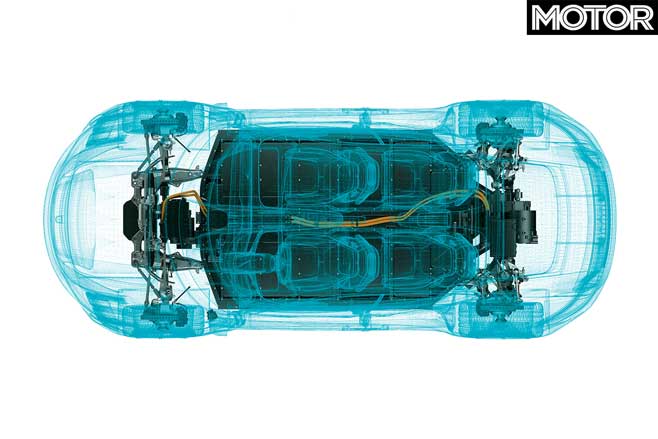
To further emphasise this, my chauffeur unexpectedly ramps ups my anxiety levels. First, the ESP warning light starts flashing. Then Sport Plus firms up the ride, speeds up the steering, and quickens throttle response. Massive instant torque produces staggering forward thrust but the shift from Sunday driver to sinner is countered by extraordinary grip and traction. On 275/40 ZR20 tyres the Taycan produces negligible wheelspin and accelerative energy is released with precision and unerring stability.
“Despite the zero-emission honours, this is a proper Porsche,” claims Bernd Propfe, platform director for Taycan.
“The Taycan Turbo can do 10 full-throttle 0-100km/h and 0-200km/h sprints without one iota decrease in performance. Even driven flat out for an hour or more, it will only lapse into limp-home mode when the distance-to-empty is zero… power and torque curves will not be dented by a drop of state-of-charge. As long as there is juice, total attack is always an option.”
Despite a 2910mm wheelbase and kerb weight just under 2100kg, the ride is not cushy. “This is a sporty GT which digitally re-interprets traditional Porsche values,” Weckbach clarifies. There is no Comfort button but there is a “lap timer for those who want to play without disturbing the wildlife”.
Rear-wheel steering is bound to enhance manoeuvrability as well as straight-line stability and the brakes seem easy to modulate and fade-free, but we are yet to find out how it stops at high speed; how ride, handling and roadholding harmonise on freeways, and how the drivetrain responds to repeated brutal torque inputs.
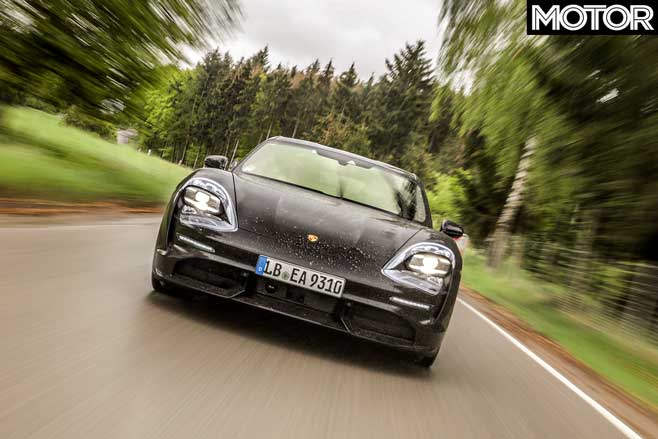
Speaking from the second-best seat in the house, the Taycan follows the driver’s instructions with aplomb, the expertly tuned electronic aids intervening in a subtle and sensitive fashion. What stands out most, though, is the surreal, supercar-like grip.
After more than two hours of swift cruising the batteries, which are cooled by a liquid circuit integrated into the floorpan, are still showing 48 per cent charge. The car industry might have conquered range anxiety but the next bogey likely to undermine widespread acceptance of clean air vehicles is looming. It’s called charge anxiety.
The Taycan is the first EV than can be fed with up to 250kW at an 800V charge point, but the corresponding infrastructure in Europe is still patchy to put it mildly, and Australia is even further behind. At last count there were only around 70 fast charging stations – the Euro preference – in Australia and not one in the Northern Territory.
Taycans come with specially-coated PSCB brakes for reduced brake dust (carbon-ceramics are optional) and Weckbach and his team tweaked the software so a small portion of the deceleration energy flows back to the batteries even during an emergency ABS stop. Unless the driver activates the mild recovery mode, the Taycan coasts when you lift off. Alternatively, you can leave it to cruise control to match speed to the flow of traffic.
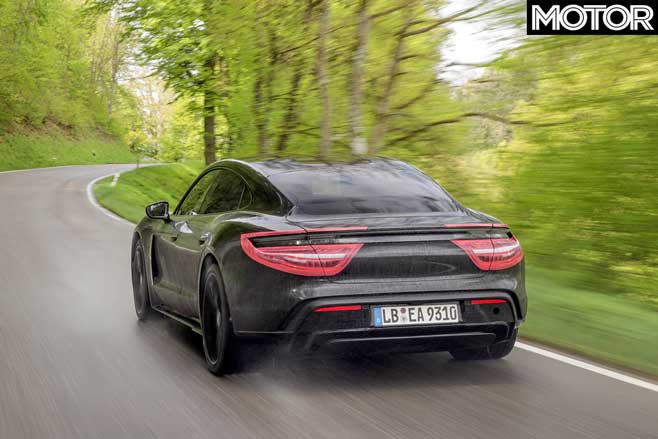
Maximum energy recovery is an unrivalled 250kW. Dialling out the e-motors while dialling in the hydraulic brakes is the key to the Taycan’s riveting performance and, I’m told, totally progressive pedal feel. While other manufacturers are promoting ‘one pedal feel’, Porsche is not interested in slowing the car unless conditions require it.
Since consumption of 40-50kWh is (allegedly) not an exception to the rule, selecting Range mode extends driving distances by about 10 per cent and is automatically disabled when speed exceeds 137km/h. Range also scales back air-con and adjusts torque vectoring. Up to 65km/h, kickdown in Sport Plus on high-grip surfaces briefly engages first gear up to 100km/h.
The top-of-the-line Taycan features air suspension, all-wheel drive, rear-wheel steering, 48-volt anti-roll bars, active aerodynamics, and steel brakes with serious stopping power. Genetically, it is closer to the 992 than the Panamera and its centre of gravity is lower than its rear-engined brother.
It’s a four-seater with just enough space for two adults in the back where the ‘foot garage’, a clever rectangular recess in the floor, helps to accommodate long legs. Up front, are fully adjustable lightweight buckets and a curved digital display the design of which harks back to early 911s.
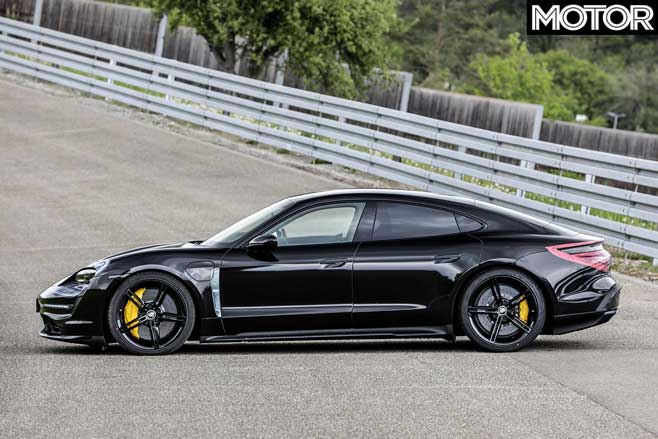
An additional rectangular monitor on the passenger side is optional. The multifunction steering wheel has 10 control elements distributed across the two horizontal spokes, the conveniently positioned centre stack is loaded with haptic and visual adventures, and an extended head-up display is optional.
The selective display puts the focus on speed, state-of-charge, consumption, range and eventually, the closest charging points. There even is an autopilot function (from the Audi A8) which will be activated as soon as regulations permit. Individual mode allows personal dynamic preferences, like combining the softest spring rates with the sportiest drivetrain calibration.
“It was our goal to create reduced, user-focused, distraction-free, increasingly voice-based ergonomics which provide only the information you need or want,“ Weckbach states.
Unique to Taycan is the optional sound generator which adds bass and sounds like the subdued hum of a synthetic boxer engine. Switch it off and all you hear is faintly whirring motors, occasional suspension thump, rumbling tyres and the howling wind. It’s the music of the future.
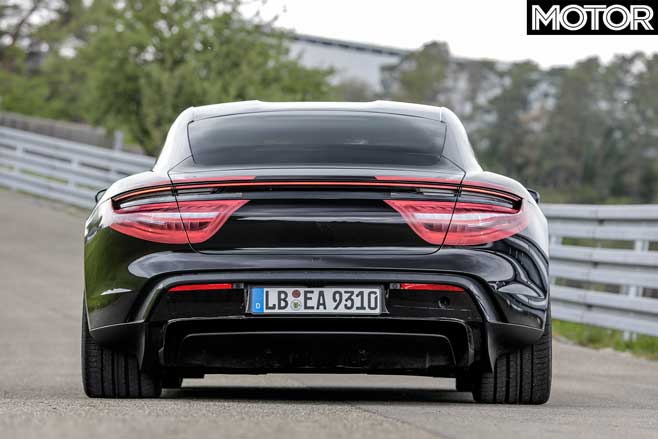
The base Taycan is rear-wheel drive only, sports an 80kWh battery and is powered by either 240kW or 280kW motors. Due late next year, it will be priced in the low $130Ks. The Carrera 4S, with a 96kWh battery and 320kW or 360kW will be in the high $130Ks, and the Turbo will set you back about $210K, before options. Australian pricing is still very much TBC however.
AWD and the bigger battery are standard on the latter two. Still to be signed off are an even rawer 540kW Turbo S and a lighter RWD GTS.
Production has already started at Zuffenhausen and peak capacity is close to 60,000 units per year. Only two Taycan body styles have been signed off, but Porsche is keen to add three more spin-offs – a 928-style coupe, matching cabriolet and a proper SUV. From 2021, one third of volume will be allocated to the Cross Sport CUV.
Starting with next-gen J1 II model, solid-state power packs will be phased in as they become available and by 2021 at the latest, peak charging power is set to increase from 250 to 350kW which should – combined with best-in-class 800V charge stations – reduce recharging times to just 14 minutes.
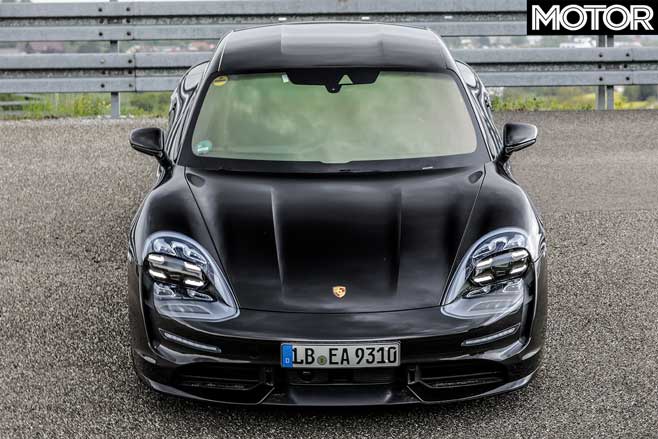
The mission of the Taycan is to eclipse the Tesla Model S. Not unexpectedly, it fails to do so in terms of packaging and (super) charging infrastructure. But while Tesla P100D versions are quicker off the mark, repeatability is the difference and Porsche engineers are adamant that Taycan’s high-performance tag is not an empty promise. “J1 epitomises the power of silence; it’s the new fast forward,“ says Weckbach.
So what is the provisional verdict of the shaken scribe slumped in the passenger seat with sweating palms? The Taycan is a remarkable high-performance, high-end GT that is solid as a rock even at ludicrous speeds.
It’s a real trend-setter that ticks even the most critical social acceptance boxes and leaves a virtually invisible CO2 footprint.
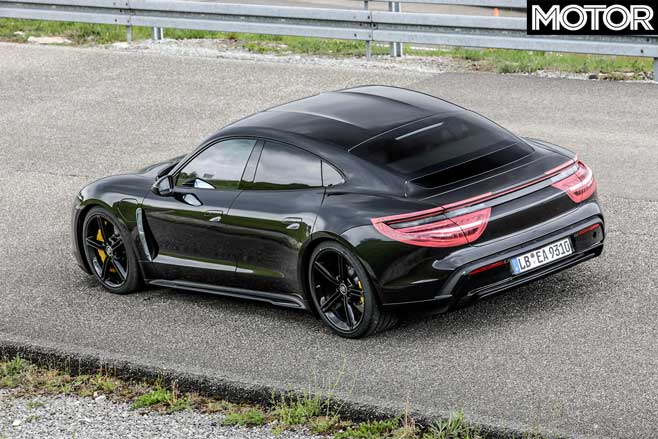
2020 PORSCHE TAYCAN TURBO SPECS Engine: Dual synchronous permanent magnet Power: 460kW (160kW front, 300kW rear) Torque: 850Nm (1000Nm ‘overboost’) Weight: 2100kg 0-100km/h: 3.0sec (claimed) Price: $288,000 (est)
Like: Instant colossal torque, limpet-like grip, quick charge, zero emissions, long range Dislike: Firm ride, weight, lack of 800v charging stations, rear seat passenger space
Rating: 4.5 out of 5 stars

